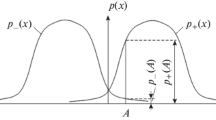Abstract
In this paper, a Look-Up-Table (LUT) based calculation for implementing log-likelihood ratio (LLR) of the Maximum a Posterior (MAP) decoder is introduced and analysed. In the region of low signal to noise ratio, the analysed performances of turbo coding have been found very satisfying. However, when implementing the MAP turbo decoder, the required calculation for LLR is too complex prohibiting its applications. In order to reduce the complexity a dynamic-LUT based simplification is proposed whereas a static-LUT never converge the expectations, since the limited size and resolution of LUT dramatically degrade the performance. In order to maintain simplicity for a high performance implementation, a dynamic LUT, which has partial resolutions in separate decision regions and being re-calculated for further iterations of decoding, is proposed. One of the most important results obtained is that our proposed dynamic-LUT based MAP algorithm removes “ln(·)” process, which is the natural logarithm in LLR’s calculation. Therefore, it reduces high computational complexity in the MAP algorithm with some reasonable performance degradations.
Similar content being viewed by others
References
Laot C., Glavieux A., Zabat J. (2001) Turbo equalization: Adaptive equalization and channel decoding jointly optimized. IEEE Journal Selected Areas in Communications 19: 1744–1752
Douillard C., Jezequel M., Berrou C., Picart A., Didier P., Glavieux A. (1995) Iterative correction of intersymbol interference: Turbo equalization. European Transactions on Telecommunications 6:507–511
Roumy, A., Fijalkow, I., & Pirez, D. (1999). Joint equalization and decoding: Why choose the iterative solution? In Proc. IEEE Veh. Tech. Conf., pp. 2989–2993.
Glavieux, A., Laot, C., & Labat, J. (1997). Turbo equalization over a frequency selective channel. In Proc. Int. Symp. Turbo Codes, Brest, France, pp. 96–102, September 1997.
Berrou, C., Glavieux, A., & Thitimajshima, P. (1993). Near Shannon limit error-correcting coding and decoding: Turbo codes. In Proc. ICC’93, Geneva, Switzerland, pp. 1064–1070.
Hagenauer J., Offer E., Papke L. (1996) Iterative decoding of binary block and convolutional codes. IEEE Transactions on Information Theory 42(2): 429–445
Benedetto S., Divsalar D., Montorsi G., Pollora F. (1997) A soft-input soft-output APP module for iterative decoding of concatenated codes. IEEE Communication Letters 1(1): 22–24
Bahl L., Jelinek J., Raviv J., Raviv F. (1974) Optimal decoding of linear codes for minimising symbol error rate. IEEE Transactions on Information Theory 20: 284–287
Frey, B. J., & Kschischang, F. R. (1996). Probability propagation and iterative decoding. In IEEE Transactions on Communications, Control and Computing, Champaign-Urbana, Illinois.
Specification of the Bluetooth System Core, Version 1.0 B, http://www.bluetooth.co. Accessed Apr 2005.
Haartsen J.C. (2000) The Bluetooth radio system. IEEE Personal Communications 7(1): 28–36
Soltanian, A., & Van Dyck, R. E. (2001). Performance of the Bluetooth system in fading dispersive channels and interference. In Global Telecommunications Conference, 2001. GLOBECOM’01 IEEE, Vol. 6, pp. 3499–3503, 25–29 November 2001.
Baltaci, Y., Kaya, I., & Nix, A. (2000). Implementation of a HIPERLAN/1 Compatibke CMF-DFE Equaliser. In Vehicular Technology Conference (VTC-2000 Spring), Tokyo, Vol. 3, pp. 1884–1888.
Khan, Z. H. (2002). DSP implementation of turbo decoder using the modified-log-MAP algorithm. Master Thesis, Florida Atlantic University, Boca Paton, Florida, December 2002.
Kahveci, S. (2006). Performance analysis of short-range wireless fixed communication system and enhancement at the reception by turbo codings. Ph.D. Thesis, Department of Electronics Engineering, Karadeniz Technical University, Trabzon, Turkey, February 2006.
Author information
Authors and Affiliations
Corresponding author
Rights and permissions
About this article
Cite this article
Kahveci, S., Kaya, İ. & Türk, K. Dynamic Look-Up-Table-Based Maximum a Posterior Probability Algorithm. Wireless Pers Commun 46, 317–328 (2008). https://doi.org/10.1007/s11277-007-9436-3
Received:
Accepted:
Published:
Issue Date:
DOI: https://doi.org/10.1007/s11277-007-9436-3




